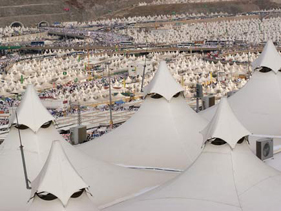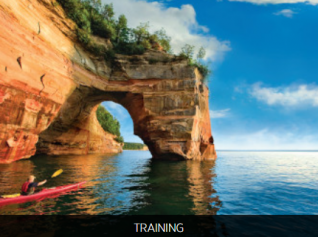Sustainable pilgrimages

Green guide to Hajj tourism
Wrote Akeela Battay in the UK Independent: Plastic water bottles and cups, Styrofoam take-out containers with half-eaten food, plastic carrier bags; a trail of waste mingling with carbon dioxide fumes erupts from miles of cranky buses, carrying tired yet exultant pilgrims alongside dusty desert roads. These are the environmental remnants of the world’s largest annual pilgrimage. It’s a sorrowful sight – the antithesis to the once-in-a-lifetime spiritual experience that is Hajj.
Going green may seem the obvious choice as we continue to learn more about the effects of climate change, but for Muslims, the protection and maintenance of nature isn’t just a social responsibility – it’s also a religious one. According to the Qur’an, every human being is a steward of the earth, responsible for the care and wellbeing of nature in all its forms, due to, in the words of environmentalist Othman Llewellyn, "humanity’s enormous ability to do both good and evil; with ability comes responsibility."
So, when approximately three million pilgrims descend upon Mecca and Medina – Islam’s most holy places – during the Hajj pilgrimage, the environmental impact is cause for concern.
But there is a green guide to Hajj tourism.

Six years ago, Dr Husna Ahmad OBE, CEO of the UK-based international development NGO Global One, created the world’s first "Green Guide to Hajj" in collaboration with ARC. She reflects that perhaps Muslims in 2017 are more aware of their responsibility to the environment and more active in contributing to positive change.
"I set out with a very ambitious plan for the guide but unfortunately I think six years ago when it was produced the Muslim world was not ready to really take action," she says. "I am still very hopeful that others will continue this work and really push pilgrims to walk lightly on this earth, and use their consumer power to demand that travel agents think about climate change."
The first guide to an environmentally sustainable Hajj was launched at ARC’s Assisi event in November 2011 to encourage Muslim pilgrims to reduce their impact on the Earth. It was part of the Green Pilgrimage Network initiative and the first English version was soon followed in 2012 by Arabic and Bahasa Indonesian editions, with a further Hausa version under development. In 2013 a Green Hajj Facebook page was launched from Indonesia to further spread the influence of the book.
As well as practical tips for pilgrims, the Guide invites Muslims to use their Hajj experience as an opportunity to reflect on their own lives and move away from material culture and the waste it leaves behind.
Valere Tjolle
@ValereTjolle
 United Kingdom
United Kingdom United States
United States Asia Pacific
Asia Pacific












































Abercrombie & Kent hails $500 million funding boost
British Airways passengers endure 11-hour 'flight to nowhere'
CLIA: Anti-cruise demos could cause itinerary changes in Europe
Gatwick braces for strike
Co-pilot faints, easyJet flight issues ‘red alert’